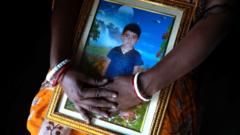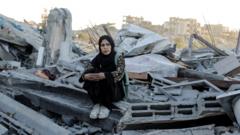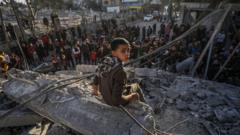With an alarming rate of childhood drownings in India's Sundarbans, mothers like Mangala Pradhan and Sujata Das are forming a united front, establishing creches and promoting safety measures to prevent further tragedies, all while pushing back against local superstitions and scarce resources.
Mothers Unite to Combat Childhood Drowning in India's Sundarbans

Mothers Unite to Combat Childhood Drowning in India's Sundarbans
In the Sundarbans, where children face the peril of drowning daily, local mothers are taking steps to protect their young ones from this tragic fate.
In a region where the water is both a lifesource and a threat, tragic tales of childhood drownings are a haunting reality for many families in the Sundarbans of India. Each day, three children in this delta region succumb to drowning, often in their own backyards—a statistic that has propelled local mothers to take proactive measures to safeguard their children.
Mangala Pradhan vividly recounts the day her one-year-old son, Ajit, drowned in their homely pond 16 years ago. While she tended to other household duties, curious little Ajit slipped away unnoticed into the water, resulting in an unimaginable heartache for the family. Today, she’s one of sixteen local mothers collaborating to run makeshift crèches established by the Child In Need Institute (CINI), taking care of nearly 40 children while their parents work.
In a region defined by its numerous ponds and rivers, the need for vigilant child care is critical. A 2020 survey revealed a staggering average of nearly three children aged between one to nine drowning every day in the Sundarbans, predominantly during the quiet hours when caregivers are busy with chores. The risk is magnified as 65% of these incidents occur within just 50 meters from home.
Following these heart-wrenching incidents, local villagers have resorted to age-old superstitions and rituals in a desperate bid to save drowning victims. Yet, mothers like Mangala and Sujata Das, whose eighteen-month-old daughter recently drowned, are determined to make changes. They are championing practical safety measures such as fencing ponds and initiating CPR training among villagers—a movement that has seen around 2,000 community members trained in recent years.
"Our struggle against water-related dangers is persistent," Sujata explained. "What happened to my daughter opened our eyes to preventive measures." With many in the community accustomed to traditional beliefs, they face an uphill task in both spreading awareness and implementing safety practices, including swimming lessons for children to better equip them for the water.
Despite the challenges posed by climate change and the lurking threats of wildlife such as tigers, these mothers continue to hope and push for improvement in their precarious living conditions. They plead with their neighbors to join them in somehow ensuring children’s safety before another tragedy strikes. Kakoli Das, who tragically lost her son last summer, urged, "We cannot afford to wait; let’s fence our ponds and teach our children to swim."
The crèches they run have become a lifeline, a haven for children in this hazardous environment. On any given day, the sound of laughter fills the air as kids sing songs about staying safe from water—a hopeful reminder of the change these mothers are fighting for amidst ongoing challenges that surround them.




















